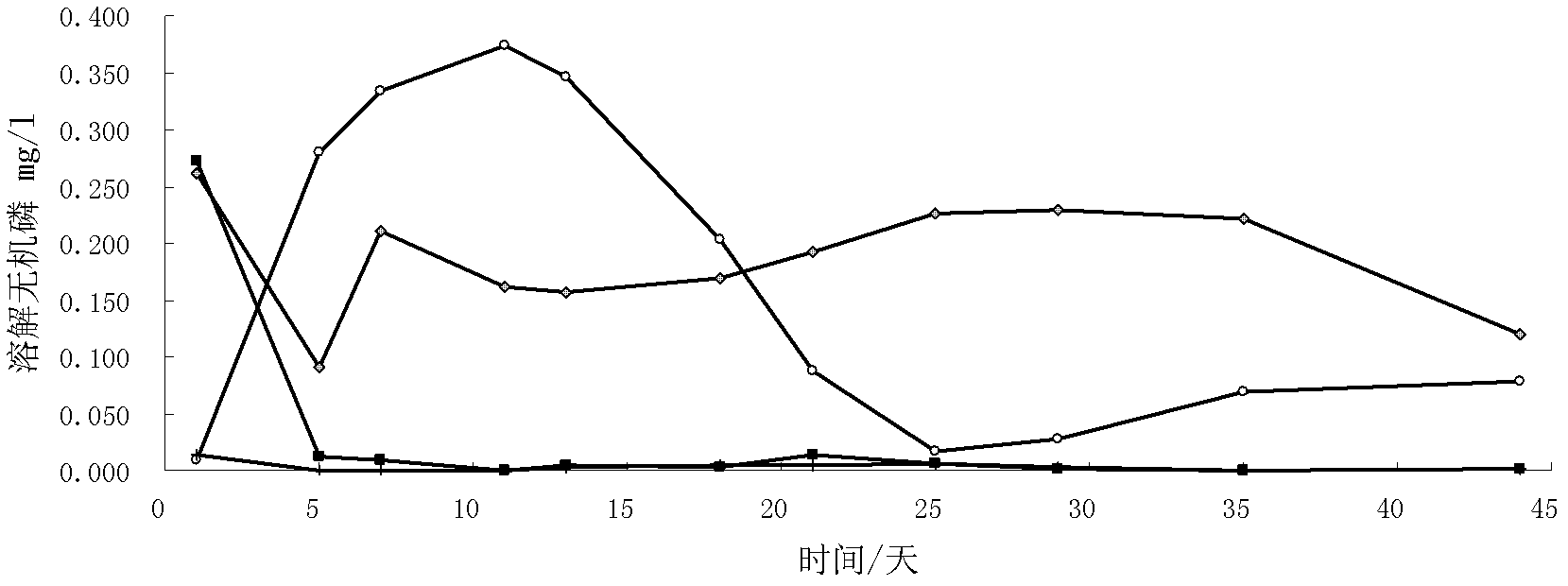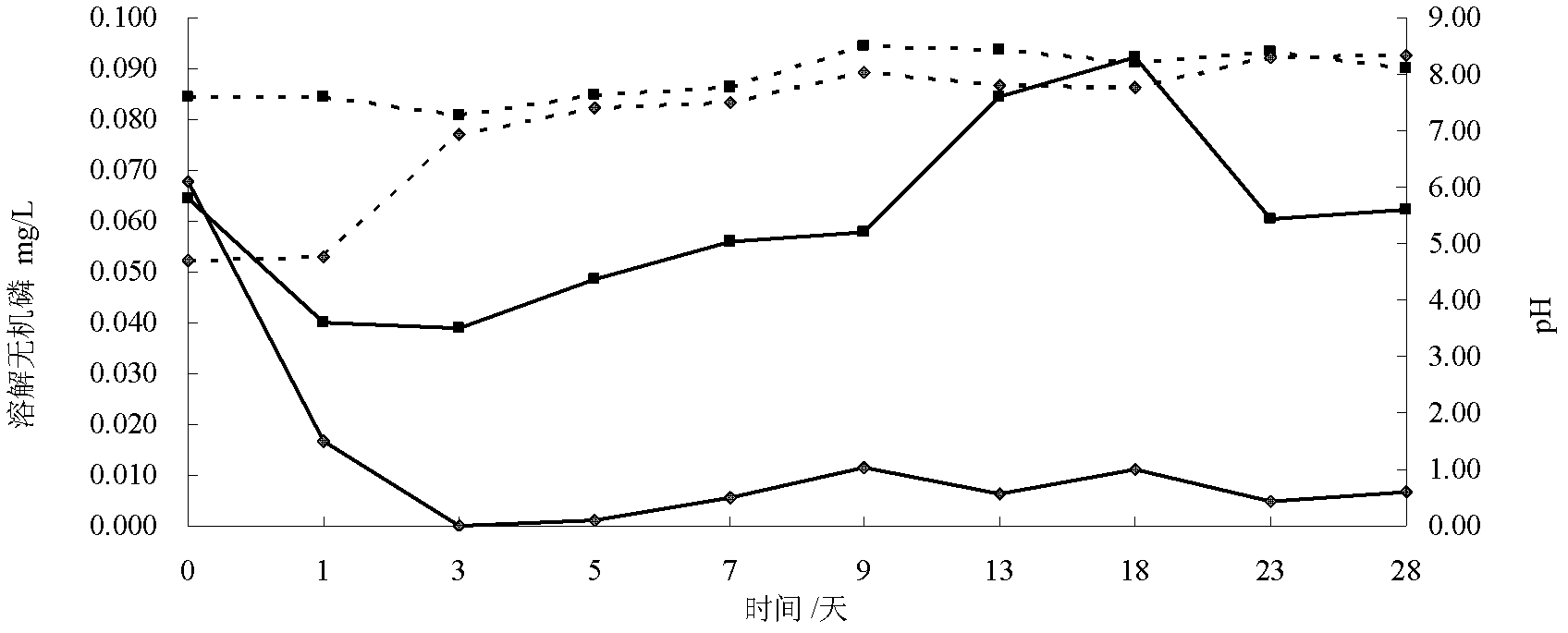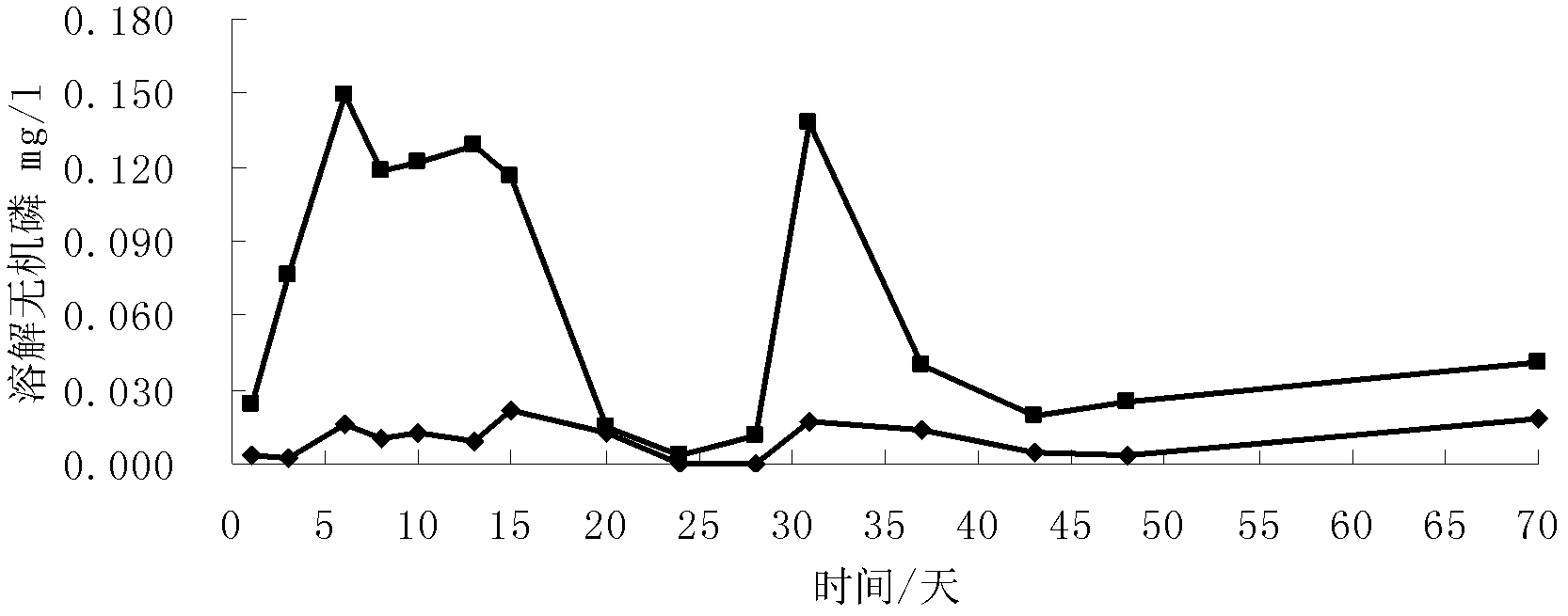Preparation method and application of eutrophic water body sediment phosphor in-situ passivating agent
A technology of eutrophication and passivation, applied in chemical instruments and methods, water/sludge/sewage treatment, water/sewage treatment, etc., can solve problems such as sediment pollution, reduce phosphorus content and increase water transparency Effect
- Summary
- Abstract
- Description
- Claims
- Application Information
AI Technical Summary
Problems solved by technology
Method used
Image
Examples
Embodiment 1
[0035] The sodium-based bentonite used in the passivating agent in this example comes from Xinyang, Henan. The bentonite is ground to a particle size2 (SO 4 ) 3 18H 2 O) The sediment phosphorus in-situ passivator was prepared after uniform mixing at a mass ratio of 1:1. Application test: Weigh 200g of the surface sediment at the bottom of the eutrophic water body, add 700ml of filtered lake water by siphon method, weigh 2g of the passivating agent before and after modification after stabilization, make a mixed solution of the passivating agent, and spray it directly on the On the surface of the water body, observe the change of dissolved inorganic phosphorus (DIP) content in the overlying water, and compare the passivation effect of the passivator before and after modification. Such as figure 1 , the sodium-based bentonite uses surface adsorption to absorb phosphorus in a short period of time before modification, reducing the DIP content in the water. Once it reaches satura...
Embodiment 2
[0038] The sodium-based bentonite used in this example comes from Xinyang, Henan. The bentonite is ground to a particle size2 (SO 4 ) 3 18H 2 O) According to the mass ratio of 2:1, the in-situ passivator of sediment phosphorus is prepared by uniformly mixing, and the added passivator (equivalent to the amount of passivator in the water body is 0.5g / L, Al 3+ content 20mg / L). Weigh and weigh 4kg of the surface sediment at the bottom of the eutrophic water body, add 30 liters of deionized water with the siphon method, and add 22g of the modified passivating agent after stabilization, and the passivating agent is made into a mixed solution first, and sprayed directly on the water body On the surface, the content of dissolved inorganic phosphorus (DIP) and the pH value of the overlying water were observed over time. Such as figure 2 , although the pH decreased after adding the passivating agent, the release of phosphorus in the sediment decreased rapidly, and the amount of rel...
Embodiment 3
[0041] The sodium-based bentonite used in this example comes from Xinyang, Henan. After the bentonite is naturally dried, it is crushed to a particle size of 2 (SO 4 ) 3 18H 2 O) Prepare sediment phosphorus passivation agent by mixing at a mass ratio of 5:1. Weigh 200g of the surface sediment at the bottom of the eutrophic water body, add 700ml of filtered lake water by siphon method, weigh 6g of passivator after stabilization, and make the passivator into a mixed solution, which is directly sprayed on the surface of the water body, and observed The content of dissolved inorganic phosphorus (DIP) in the overlying water changes, and the content of DIP in the overlying water changes. Such as image 3 , the passivator can control the DIP content in water below 0.02mg / L and reduce the release of phosphorus from sediments. At the same time, it can also be seen that after using the passivating agent, the phosphorus content of the overlying water body has been in a low range, whi...
PUM
| Property | Measurement | Unit |
|---|---|---|
| hardness | aaaaa | aaaaa |
Abstract
Description
Claims
Application Information
 Login to View More
Login to View More - R&D
- Intellectual Property
- Life Sciences
- Materials
- Tech Scout
- Unparalleled Data Quality
- Higher Quality Content
- 60% Fewer Hallucinations
Browse by: Latest US Patents, China's latest patents, Technical Efficacy Thesaurus, Application Domain, Technology Topic, Popular Technical Reports.
© 2025 PatSnap. All rights reserved.Legal|Privacy policy|Modern Slavery Act Transparency Statement|Sitemap|About US| Contact US: help@patsnap.com



